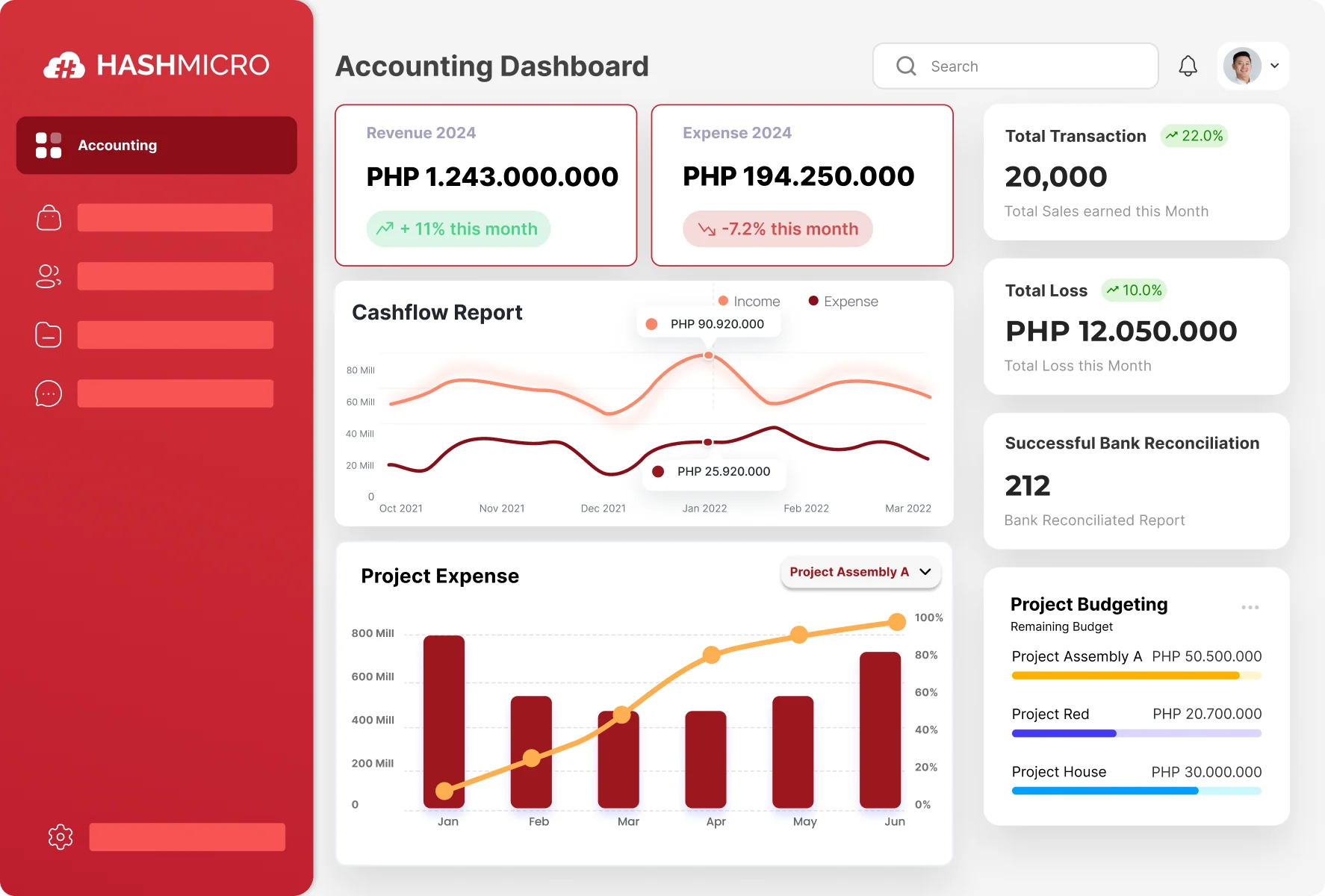Would you rather receive ₱1 million today or ₱1.2 million a year from now? On the surface, waiting might seem like the better deal. After all, it’s more money. But what if that extra ₱200,000 isn’t actually worth the wait? This kind of question is exactly what Net Present Value (NPV) helps answer.
In the real world, business owners in the Philippines face similar choices all the time. Whether it’s investing in a new branch in Cebu, purchasing bulk inventory in advance, or upgrading to a better POS system, each decision involves spending money now with the hope of earning more later.
NPV helps you calculate whether those future returns will really outweigh today’s costs, especially when inflation, risks, and opportunity costs are factored in.
This article will walk you through what NPV is, how it works, and how to calculate it step by step. We’ll also include a simple example (yes, in pesos!) and show how software like HashMicro can help you.
Key Takeaways
|
Table of Contents
What is Net Present Value?
Net Present Value (NPV) is the current value of all future cash inflows and outflows from an investment, discounted to today’s value. Common in finance and accounting, it helps assess the true worth of businesses, projects, investments, or any activity involving cash flow.
NPV provides a comprehensive view by including all related revenues, expenses, and capital expenditures, based on Free Cash Flow (FCF). It also considers the timing of each cash movement, which can significantly influence the result.
Generally, receiving money earlier and paying expenses later increases the present value of an investment.
Why is Net Present Value Important?
Net Present Value (NPV) is a vital tool in financial analysis because it helps businesses determine whether an investment will generate more value than it costs.
By discounting future cash flows to their present value, NPV provides a grounded view of profitability that takes both time and risk into account.
Here’s why NPV matters in decision-making:
- Indicates profitability: A positive NPV shows that the projected returns (in today’s value) exceed the costs, suggesting that the investment is financially viable. A negative NPV points to a potential loss.
- Supports better investment decisions: NPV allows businesses to compare multiple projects on equal footing, helping prioritize those with the highest expected value—especially important when capital is limited.
- Incorporates time value of money: NPV reflects the principle that money received today is worth more than the same amount in the future, making it a more accurate measure than simple payback or ROI.
- Adjusts for risk: By applying a discount rate that reflects the risk level of a project, NPV helps decision-makers account for uncertainty in future cash flows.
In short, NPV helps companies allocate resources more strategically and avoid investments that look good on paper but don’t deliver value in the long run.
While other metrics like EBITDA focus on operational profitability, NPV offers a fuller picture by factoring in the time value of money and capital costs.
Limitations of Net Present Value
Although Net Present Value (NPV) is widely favored for evaluating investment opportunities, it comes with certain limitations that must be taken into account.
Some common challenges of using NPV include:
- Relies heavily on assumptions: The analysis requires numerous estimates about future cash flows, timing, and costs.
- Highly sensitive to input changes: Even small adjustments to assumptions, like growth rates or discount rates, can significantly alter the result.
- Prone to manipulation: With so many variables involved, it’s possible to tweak inputs to produce a preferred outcome.
- May overlook indirect effects: NPV typically focuses on direct financial impacts and might miss broader benefits or consequences elsewhere in the business.
- Assumes a fixed discount rate: The model often applies a single discount rate across all future periods, which may not reflect changing market conditions.
- Difficult to adjust for risk accurately: Estimating the right level of risk is complex, especially when data on probabilities and correlations is limited or unavailable.
To work around the limitations, you can consider using accounting software, where not just NPV is used to evaluate investment, but you can also use your data and metrics to calculate with your preferred method and strategy. If you’re curious about the price, click on this banner below.

How to Calculate Net Present Value
The Net Present Value (NPV) is calculated using the following formula:
NPV = ∑ (Cash inflow ÷ (1 + r)^t) − Initial Investment
Where:
- Cash inflow refers to the projected returns or earnings the investment will generate over time.
- r represents the discount rate, which accounts for the investment’s risk and the return expected from alternative opportunities.
- t is the specific time period when each cash inflow is received.
- Initial Investment is the upfront capital required to start the project or investment.
This formula helps determine whether the present value of future returns outweighs the original cost. And then, how do you calculate the net present value itself? Here are the step-by-steps that you can take:
Step 1: Estimate Future Cash Flows: Project all expected cash inflows and outflows over the life of the investment. This step depends heavily on effective cash flow management to ensure projections are realistic and aligned with actual business performance.
Step 2: Choose the Discount Rate: Select a discount rate that reflects the risk and opportunity cost of the investment, often based on WACC or industry benchmarks. This rate affects how future cash flows are valued today.
Step 3: Calculate Present Value of Cash Flows: Discount each future cash inflow using the formula:
Present Value = Cash Inflow ÷ (1 + r)^t
Then, sum all the discounted cash flows to get the total present value.
Step 4: Subtract Initial Investment: Deduct the upfront cost from the total present value to get the NPV.
- NPV > 0: Profitable
- NPV = 0: Break-even
- NPV < 0: Likely loss
Example of Net Present Value

They expect to earn the following net cash inflows over the next 4 years:
- Year 1: ₱180,000
- Year 2: ₱200,000
- Year 3: ₱220,000
- Year 4: ₱160,000
The chosen discount rate is 10%, based on typical business risk and financing costs.
Step-by-Step NPV Calculation
Step 1: Estimate Future Cash Flows: Projected earnings for four years are listed above.
And then, for Step 2: Choose the Discount Rate: The discount rate is set at 10%.
Step 3: Calculate Present Value of Each Cash Flow: To find the present value, each year’s cash inflow is discounted using the 10% rate. For example, the ₱180,000 expected in Year 1 is divided by (1 + 0.10), giving a present value of roughly ₱163,636. This process is repeated for the other years:
- Year 2’s ₱200,000 becomes approximately ₱165,289
- Year 3’s ₱220,000 becomes around ₱165,441
- Year 4’s ₱160,000 becomes about ₱109,261
When added together, the total present value of all future cash inflows is approximately ₱603,627.
Step 4: Subtract the Initial Investment: Finally, subtract the initial ₱500,000 from the total present value:
₱603,627 − ₱500,000 = ₱103,627
Interpretation
Because the NPV is positive (₱103,627), the investment is expected to bring in more value than it costs, making it a financially sound opportunity.
Conclusion

This is where tools like HashMicro Accounting Software can make a big difference. Instead of juggling spreadsheets or manually forecasting cash inflows, the system provides real-time financial insights, automatic cash flow tracking, and integration with budgeting tools, all in one platform.
With more accurate data at your fingertips, decisions based on NPV become easier, faster, and more grounded. And because HashMicro is designed to support local compliance and reporting standards in the Philippines, it’s well-suited for businesses that want both clarity and control over their financial planning.
If you want to see how easy it is to manage cash flows and calculate metrics, try the free demo and explore the features in a guided demo!

FAQ on Net Present Value (NPV)
-
Do you include changes in working capital when calculating NPV?
Yes, changes in net working capital (current assets minus current liabilities) are considered cash flows. An increase in working capital reduces cash flow (a cash outflow), while a decrease adds to cash flow. These adjustments ensure your NPV model reflects cash tied up in inventory, receivables, or payables.
-
What’s the difference between NPV and IRR?
While NPV gives an absolute dollar value, IRR shows the percentage rate at which NPV equals zero. Unlike IRR, NPV handles projects with uneven cash flows or multiple discount rates more reliably, making it the preferred method for complex or long-term investments.
-
Should you use mid‑period discounting in NPV?
Yes, some models use mid‑period discounting by adjusting the formula (e.g., discounting at t−0.5) to reflect when cash flows typically occur mid‑period. This better approximates real-life timing and results in a slightly higher and more accurate NPV.
-
What is risk‑adjusted NPV (rNPV)?
Risk‑adjusted NPV (rNPV) weights each expected cash flow by its probability of occurring. This method is commonly used in industries like pharmaceuticals where each development stage has distinct risks, allowing uncertainty to be factored directly into the NPV model.






































